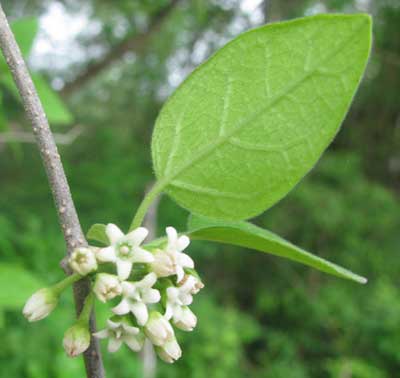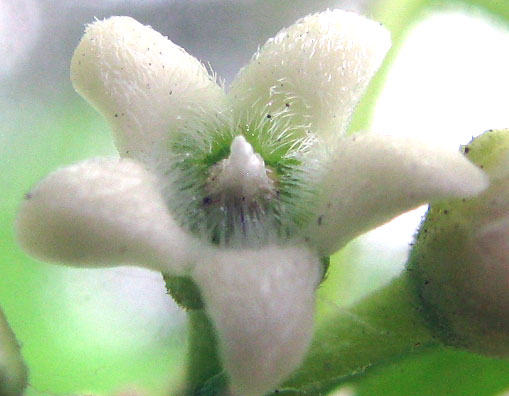Excerpts from Jim Conrad's
Naturalist Newsletter
from the May 16, 2010 Newsletter issued from Hacienda Chichen Resort beside Chichén Itzá Ruins, central Yucatán, MÉXICO; limestone bedrock, elevation ~39m (~128ft), ~N20.676°, ~W88.569°
A CLIMBING MILKWEED
Nowadays the plant shown below is flowering:

If you break one of those leaves, copious white latex oozes out. The flowers are fragrant, smelling a bit like vanilla. A flower close-up is shown below:

Ulli says it's MARSDENIA COULTERI, and after drawing what must have been around a hundred such flowers (at the University of Bayreuth in Germany, while peering through a binocular microscope at tiny details) I can tell you that an unusual feature of the flower is how the white stigma head emerges above the dark brown anthers around it like a little mountain of snow. Also, the petals in this species are unusually hairy.
You can see how hairs at the flower's center point downward, encouraging visiting pollinators to continue down toward the corolla base, to do their pollinating business. However, why do hairs at the petals outer ends point in an opposite direction? I'm guessing that just before the blossoms fully open, when the petals are erect, the upward-pointing hairs dissuade pollinators from entering the flower before the sexual parts are fully mature.
I doubt many folks in the Yucatán ever notice this modest little vine but I'm featuring it in the hope that someday the pictures and the fact that I've found it here will interest a future researcher.
By the way, now they've sunk the entire Milkweed Family, the Asclepiadaceae, into the Dogbane Family, the Apocynaceae.